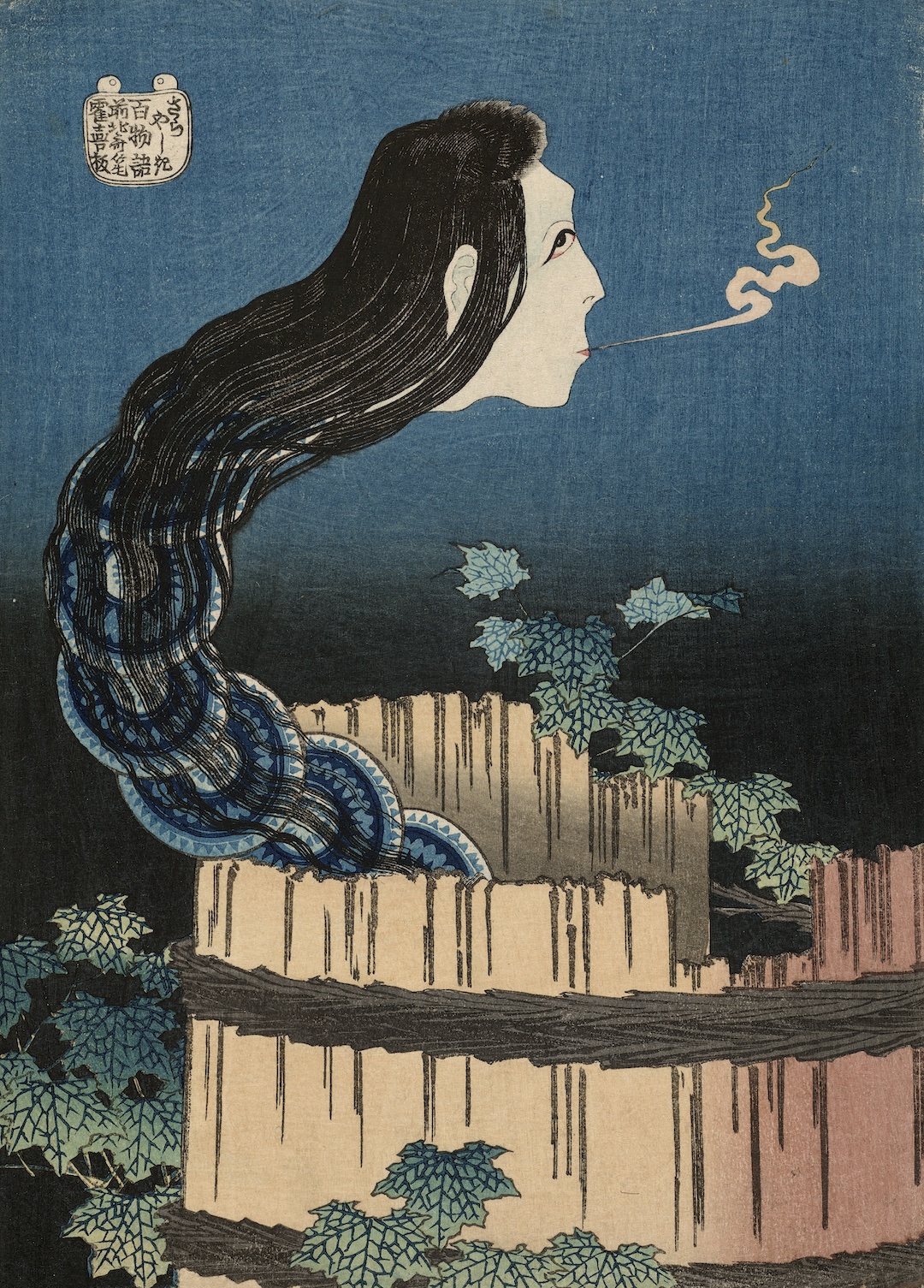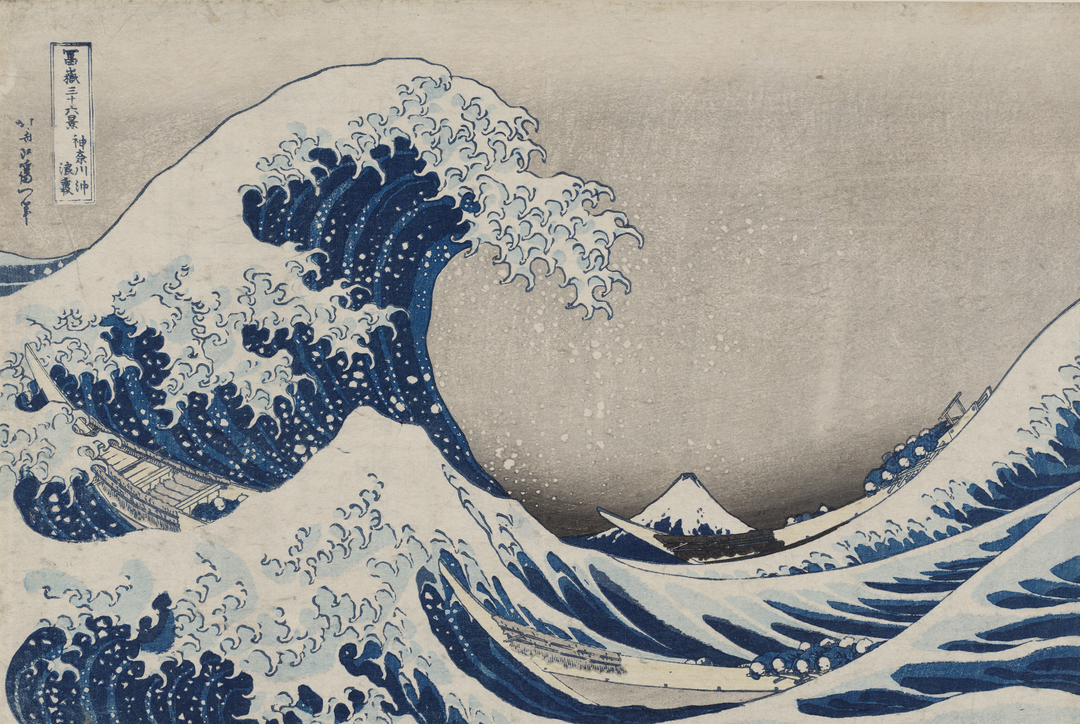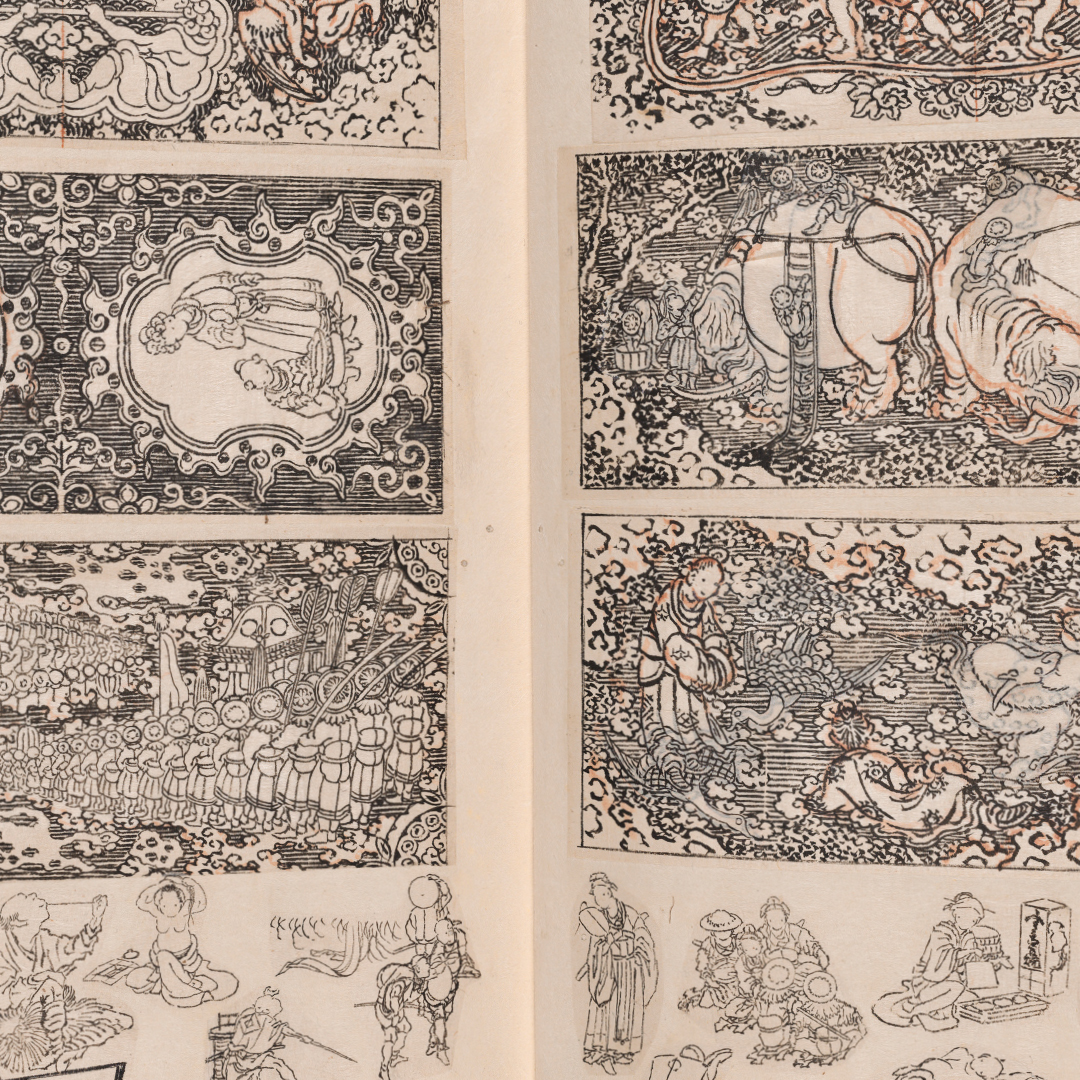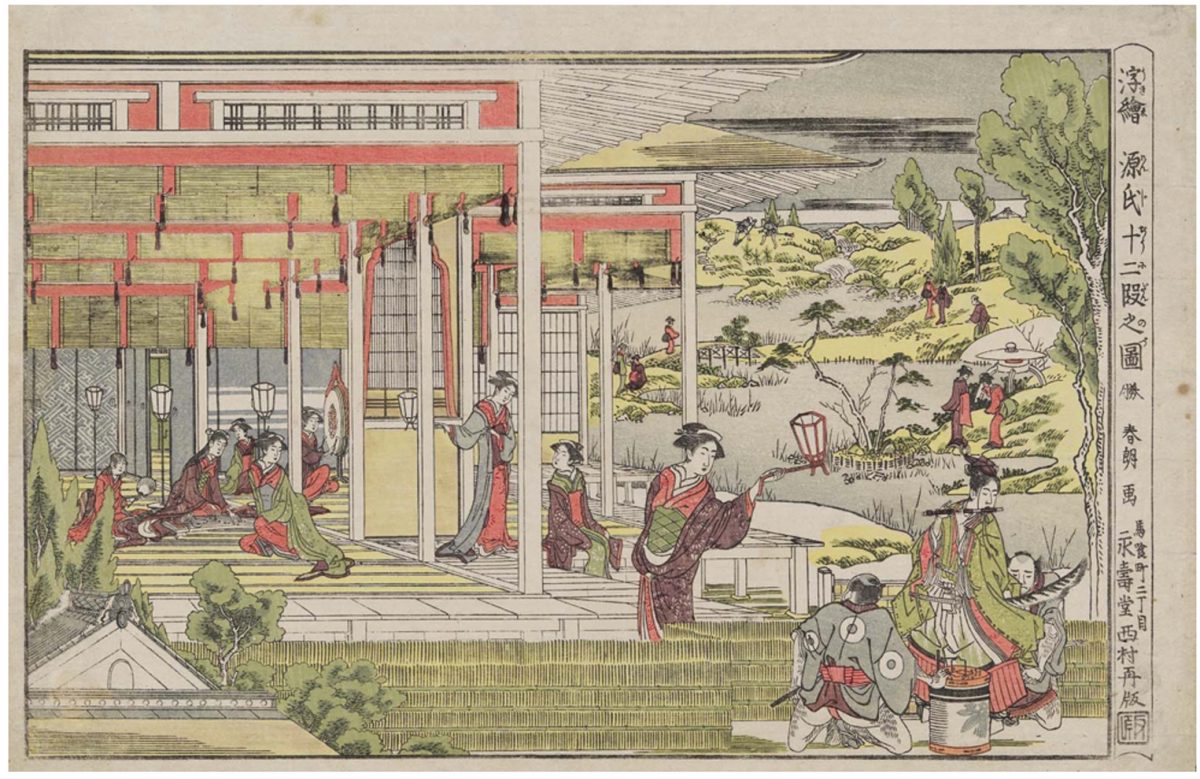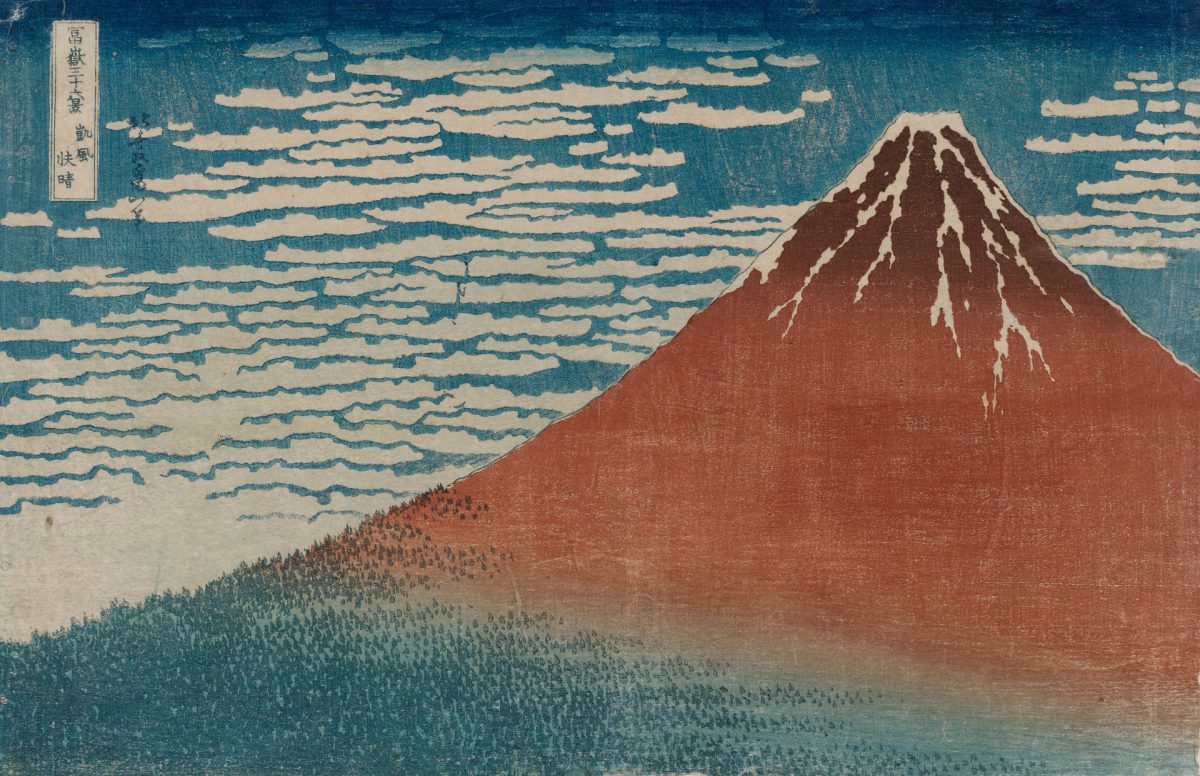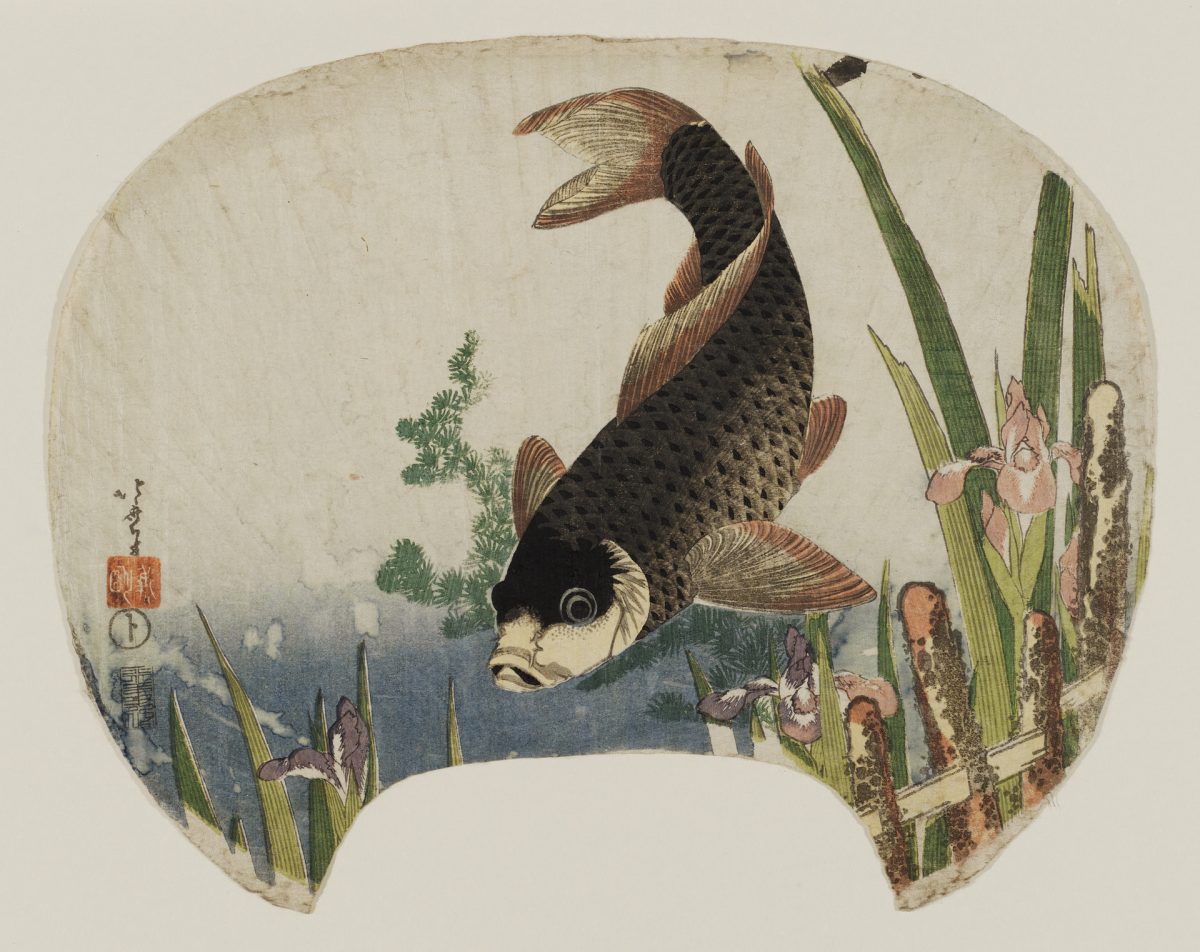Hokusai Smartphone Tour: The Mansion of the Plates
Katsushika Hokusai is renowned for his illustrations of popular Japanese ghost stories. In The Mansion of the Plates, the historic Japanese artist depicts the story of the maidservant Okiku, who was accused of breaking a precious porcelain plate that belonged to the master of the mansion in which she worked. She then either committed suicide by throwing herself into a well or was killed by her enraged master and thrown into the well.
It is said that Okiku’s ghost rises from the well night after night to count the mansion’s plates in a haunting moan: “One… two… three,” followed by a horrible shriek when her count comes up short. In Hokusai’s clever yet unusual version of the scene, the plates themselves rise from the well one after another, making up the snake-like neck of the ghostly head.
Learn more about Hokusai’s artistic interpretation of this supernatural tale from the curator of Hokusai: Inspiration and Influence from the Museum of Fine Arts, Boston Dr. Sarah Thompson and Tufts University Professor Susan Napier by tuning in to the seventh and final stop of the exhibition’s free smartphone tour. Explore all seven stops on the tour by scanning the QR code adjacent to select artworks in SAM’s galleries or on your own time via our SoundCloud. Don’t miss your final chance to see Hokusai: Inspiration and Influence in Seattle before the exhibition closes at SAM this Sunday, January 21—get your tickets now!
The Mansion of the Plates, about 1831–32
SARAH THOMPSON: Professor Susan Napier teaches international literary and cultural studies at Tufts University. She is known for her comprehensive studies of Japanese comics and animated films, manga and anime, and the connections between present-day popular culture and the floating world of Hokusai’s time. She is especially interested in fantastic and supernatural images such as Hokusai’s ghost prints.
SUSAN NAPIER: What we have in front of us is, even by Hokusai’s unique and extraordinary standards, one of his most amazing prints. This is darker, stranger, and weirder than even his other ghost prints, which are also often pretty dark and strange and weird, ’cause we’re really trying to figure out: What are we seeing? What’s going on here? And we see this creature coming out of what looks like a wooden bucket. It’s actually a well. And it’s female. We can tell that by the hair, the long hair, and the fairly delicate features. But what is that on her neck—or is that her neck?
In fact, they are ceramic plates. They’re dishes. It’s a very famous story. It’s about a young girl, a serving girl named Okiku, and she served in the mansion of a very prominent samurai. At least that’s how the story goes, the most popular version. And this samurai, her master, made advances to her, which she steadfastly rejected. And he did it again, and she still rejected him. And he grew angrier and angrier. So, at one point he decides he’s really going to teach her a lesson, and he breaks one of a set of ten ceremonial, very beautiful, very valuable plates that the mansion owns. And this is actually a major crime in that era. And she could have been punished by death for breaking a plate. He accuses her of having broken the plate. She denies it, says she didn’t do it; he says, “Well, I’m sorry. If you don’t give in to me, I’m going to tell everyone that you broke the plate, and you’re going to be put to death.” So there are two versions of what happens next. One is that she is so upset and traumatized by the whole thing that she plunges into a well in the mansion’s garden and dies. The other one is that he actually throws her into the well in a rage and essentially murders her.
Well, it’s really the most eerie and unique part of this. Apparently after the girl had died, people began hearing strange sounds from the well. And they would come out and they’d hear a girl’s voice counting, and she would be counting, “One, two, three, four, five, six, seven, eight, nine.” And you are kind of waiting for her to say ten. And instead of saying ten she gives out this terrible hideous scream. And (laughs) I love stories like that because—Japanese literature and folklore is full of stories of ghosts, and particularly ghostly women. Really, Japanese ghosts tend to be female on the whole. But this one is such an interesting story in that she’s not just revenging herself, which she probably is by haunting the well, but also kind of imploring and asking to be noticed and to be—for people to understand what has happened to her.
This ghost story, the whole story of the plates, is still referred to in modern Japanese popular culture. And you see a—there’s an episode of a very popular anime series called Maison Ikkoku, in which one of the characters dresses up as Okiku and hides in a well one night and ends up not being able to get out and has a lot of misadventures. I think it’s sort of like a Halloween festival kind of thing. But it’s generally comic and quite funny. But if you want a really scary vision that was inspired by this Hokusai image of the plate mansion, you have to look at the very, very popular and very scary Japanese horror film Ringu, or The Ring. Because if you’ve seen it, you’ll probably never forget one of the most important and terrifying images of a young girl with long black hair covering her face, and she’s coming very slowly, climbing out of a well towards you. And it is really a riveting and terrifying scene. And it is absolutely kind of an homage to Hokusai’s picture of the plate mansion.
– Lily Hansen, SAM Marketing Content Creator
Image: The Mansion of the Plates (Sara yashiki), from the series One Hundred Ghost Stories (Hyaku monogatari), about 1831–32 (Tenpо̄ 2–3), Katsushika Hokusai, Japanese, 1760–1849, woodblock print (nishiki-e); ink and color on paper, William Sturgis Bigelow Collection, Photograph © Museum of Fine Arts, Boston.
